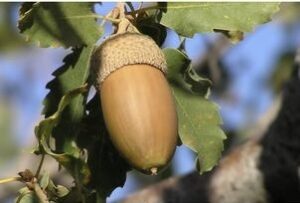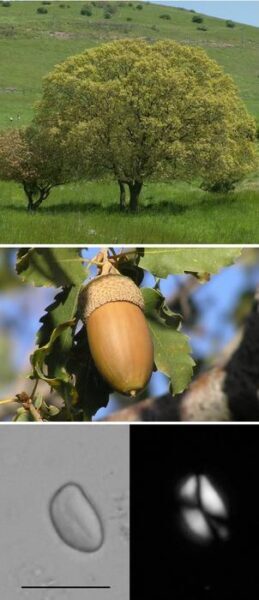
Proceedings of the National Academy of Sciences—Early hominins in the Early Middle Pleistocene Epoch processed a wide variety of starch-rich plant foods, according to a study. Compared with animal foods, wild plants require more extensive processing prior to consumption. The use of wild plants over the course of human evolution has not been well-studied, partly due to the low archaeological visibility of plant resources. Hadar Ahituv, Nira Alperson-Afil, Amanda Henry, Naama Goren-Inbar, and colleagues analyzed preserved plant microremains on eight basalt percussive tools, including anvils and hammerstones, from the early Middle Pleistocene site of Gesher Benot Ya‘aqov, Israel. The authors extracted and classified more than 650 starch grains embedded in the surfaces of the basalt tools. The authors detected starches from acorns, grass grains, water chestnuts, yellow waterlily rhizomes, and legume seeds. The identified plants originated from diverse habitats, including a lake close to the site and more distant upland areas. The documented diversity and association with stone tools suggest that the microremains represent residues of plant food processing by hominins, rather than a natural representation of local flora. The authors note that the identified plants vary in seasonality and require diverse gathering and processing methods, representing indirect evidence of advanced cognitive abilities. According to the authors, the findings suggest that carbohydrates extracted from diverse wild plants played an important role in the diets of early hominins at least 780,000 years ago.
__________________________

Whole plant (top), edible part (middle), and characteristic starch grain (bottom) of oak. Hadar Ahituv and Yoel Melamed
__________________________
Article Source: PNAS news release
*“Starch-rich plant foods 780,000 y ago: Evidence from Acheulian percussive stone tools,” by Hadar Ahituv et al., Proceedings of the National Academy of Sciences, 6-Jan-2025. https://www.pnas.org/cgi/doi/10.1073/pnas.2418661121
__________________________
Advertisement

EXPLORE THE ANCIENT ETRUSCANS IN PERSON!
Experience a unique, up-close-and-personal hike among ancient hilltop towns in central Italy. You will walk the sensational countryside of the regions of Umbria and Tuscany, soaking in important sites attesting to the advanced Etruscan civilization, forerunners of the ancient Romans; imposing architectural and cultural remains of Medieval Italy; local food and drink; and perhaps best of all — spectacular scenic views! Join us in this collaborative event for the trip of a lifetime!



